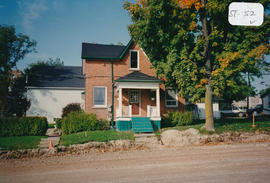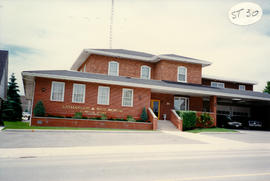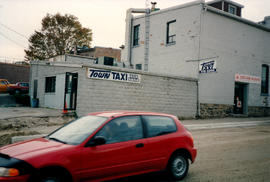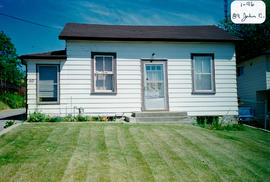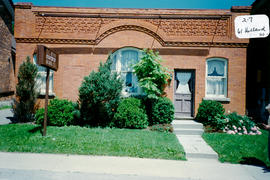- CA BWGPL GJ-HB-2017-04-21-08
- Item
- 1995
Part of George Jackson fonds
The mid-block building located at 52 Simcoe Road was built post-1900 (1902?) in the Gothic Revival Cottage style. The house, which is larger than other older cottages of a similar style in Bradford, was built on property owned by Charles Adams. Originally, there was a garden to the west and a barn on the lane. Later residents of this house included Joe Brown (a retired farmer from the 10th line) and Jessie, who lived here until he died. Joe was a noted gardener who raised his granddaughter Margaret Turner. Paul Margetiak and his wife and son also lived here at one time. He was a gardener, too, and he built a garage on the property. Len Saint did the cement work and added a closed-in porch. Eventually the property was bought by Gary Swagerman. He lived in the house with his wife and family and eventually had the barn remodelled to become the site of a dry cleaner. The garden was paved and used as a parking lot for the business.
The 1½-storey, three-bay cottage has a rectangular plan, a centre hall, and a symmetrical façade. The medium-pitched, gable roof has a centre gable over the entrance. There are single windows to the primary rooms on each side of the covered entrance porch. A raised, open porch has a hip roof supported on simple, wood columns set directly on the porch base/foundation. The porch has a simple, wood handrail and balusters. A single entrance door is set into a segmented, arched opening. Windows are set into segmented, arched openings with brick voussoirs and concrete lug sills. The windows and door are not original. A second-storey window set halfway into the centre gable is a reference to the Gothic Revival style. Locally-made bricks were placed by Tom Saint on the wood frame construction. According to the 2000 inventory, the house is in good condition. (1, 2, 3)
George Jackson

